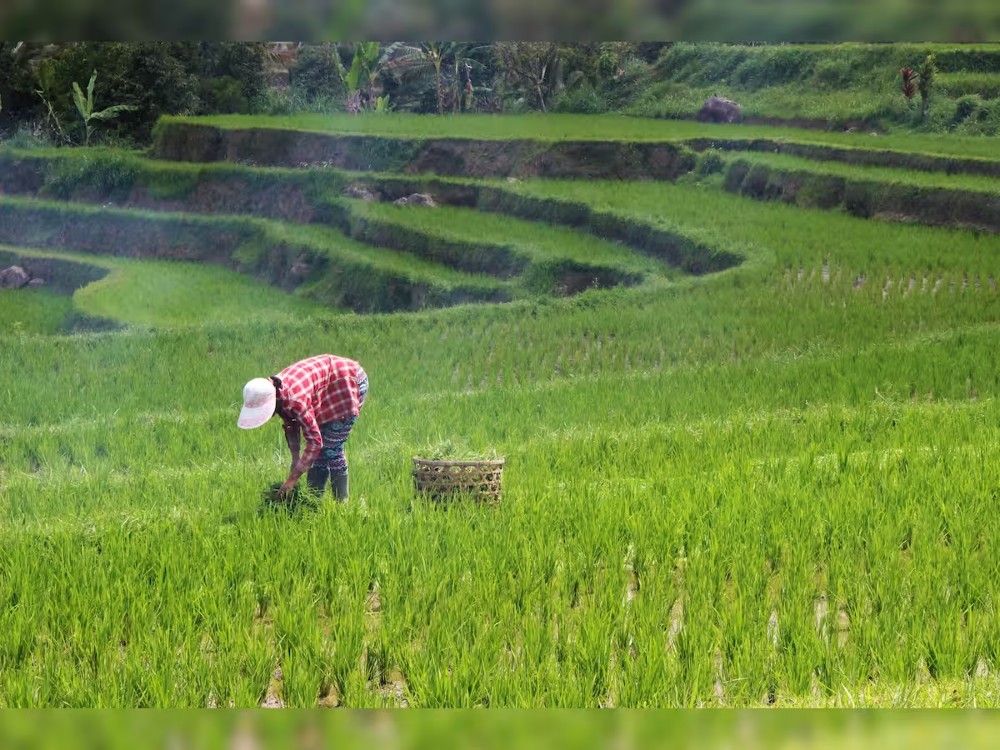Unlocking Agricultural Diversification and Intensification in Northern Bangladesh With Short-duration Aman Rice

In Bangladesh, where rice monocropping is prevalent, diversifying crops is crucial for food security. Short-duration aman rice varieties like BRRI dhan-75, promoted by the SI-MFS initiative, enable earlier harvests, allowing farmers to plant additional crops such as mustard and potatoes. This approach boosts income and food diversity, addressing climate change challenges and enhancing agricultural productivity.
05 September 2024, Bangladesh: Bangladesh’s economy dramatically depends on its agriculture sector, which contributes 13% to its gross domestic product. The country’s food security heavily relies on rice production, as rice is a staple food and the primary source of calories. Thus, 75% of the country’s land is used for rice cultivation .
Rice monocropping is the dominant cropping pattern in Bangladesh, covering around 27% of the country’s total area. However, this pattern covers over 50% of the land in certain areas, especially in northern Bangladesh.
Bangladeshi farmers must diversify their production to cope with climate change and agricultural transformation challenges. There is a tradeoff between crop diversification and food security in Bangladesh; therefore, cropping intensification is the best solution for crop diversification.
The wet or aman season, from June to September/October, poses significant challenges for cultivating multiple crops because of frequent rain and wet soil conditions. Aman rice is farmers’ most viable and profitable choice during this period. However, as a primary crop, during the aman season, rice is vulnerable to floods, storms, and drought.
Boro rice contributes around 55% of Bangladesh’s rice production, significantly supporting the country’s food security. The boro or dry season (October/November to May/June) is also the best time for crop diversification. Still, providing space for non-rice crops while cultivating boro rice is a significant challenge.
Mustard, potato, field pea, and carrot have been successfully grown between two rice cropping seasons. The best time to plant these crops is early November, which is only possible if the aman rice crop is harvested by the end of October or early November.
But, traditionally, Bangladeshi farmers cultivate long-duration (130-150 days) aman rice varieties. The most popular cultivar is Gutiswarna. This local cultivar can yield approximately 5-5.5 tons per hectare. Farmers must harvest the rice by November, or crops planted during the following rabi season usually produce significantly lower yields. A game-changing crop intensification and diversification option is cultivating short-duration instead of long-duration aman rice.
Many short-duration aman varieties (110-120 days) can produce a yield of around 5-6 ton ha-1, similar to Gutiswarna or other long-duration varieties available today. Planting short-duration aman rice varieties that mature 30-35 days earlier without significant yield loss would allow farmers to open a new door for growing diversified rabi crops.
The Sustainable Intensification of Mixed Farming Systems (SI-MFS), a CGIAR global initiative, started expanding the use of BRRI dhan-75, a short-duration aman variety, in northern Bangladesh since the 2023 aman season.
The northern part of Bangladesh comprises the greater Rangpur and Dinajpur Regions, with a total cultivable land of 12,23,860 haxx. The land type combines vast plains areas, some parts of the Barind Tract, and riverine sand and silt landmasses known as char.
In 2023, SI-MFS distributed 1,600 kg of BRRI dhan-75 seed among the 540 farmers in 60 ha of the project areas in Rangpur and Nilphamari Districts. In the 2024 Aman season, the project distributed 5,000 kg of seeds among 1,520 farmers, cultivating 180 ha of land.
The SI-MFS provided all necessary technical support for the best management of BRRI dhan-75. Most farmers followed the community-based ideal seedbed for healthy seedlings, seedlings around 20 days old, row transplanting, and the application of top dress urea within 30 days of transplanting.
All farmers harvested their short-duration Aman rice within mid-October and immediately planted rabi crops such as potato, mustard, carrot, and green peas. For crop intensification and diversification, the project provided seeds and technical support and organized several farmers’ field days to demonstrate the performance of short-duration aman rice and subsequent non-rice crops.
“I am very pleased to see the performance of this short-duration variety,” said Suman Islam, a farmer who attended the field day. “I harvested 30-35 days earlier than the Gutiswarna, and the yield was 5.6 tons/ha. Now I can cultivate an additional crop in my field, which was impossible before.”
Fatema, a female farmer, had the same experience. “I never thought it was possible to grow three crops in my field, but it became feasible with short-duration aman rice,” she said.
Mashiur Rahman mentioned that cultivating three crops instead of two with the short-duration variety increased their farm’s income.
The adoption of short-duration aman rice varieties will increase farmers’ income and increase the diversity of the food supply, enhancing the transformation of food systems in this region. Rice fallow is widely practiced in northern Bangladesh. If short-duration aman rice replaced at least 50% of the long-duration aman rice varieties, it would increase system productivity and diversify crops.
To read more about the news about the Rice News continue reading Agriinsite.com
Source Link : https://www.en.krishakjagat.org/ag-tech-research-news/unlocking-agricultural-diversification-and-intensification-in-northern-bangladesh-with-short-duration-aman-rice/














